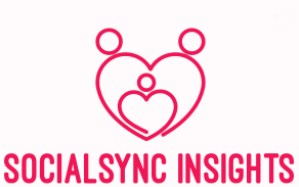The advent of touchscreen technology has reshaped various sectors, including the medical field. Touchscreens offer an array of advantages that enhance patient care, streamline operations, and improve overall efficiency. But how exactly do touchscreens benefit the medical field? Let’s delve deeper.
The Versatility in Medical Applications
The medical field reaps numerous benefits from the versatility that touchscreens offer. From operating rooms to patient management systems, the use of touchscreens makes complex tasks manageable and enhances interactivity.
| Application | Benefits |
|---|---|
| Operating Rooms | Real-time monitoring, precision control |
| Patient Management | Efficient data entry, easy access to records |
| Medical Imaging | Enhanced visualization, better diagnostics |
| Telemedicine | Remote consultations, instant data sharing |
| Patient Kiosks | Streamlined check-ins, reduced wait times |
Touchscreens in Operating Rooms
In operating rooms, touchscreens provide real-time monitoring of patient vitals. Surgeons can access and control various medical equipment with the touch of a finger, thereby increasing precision. Additionally, touchscreens allow easy access to medical records and images during operations, aiding in better decision-making.
Improving Patient Management Systems
Touchscreens significantly enhance patient management systems by allowing quick data entry and easy access to records. Healthcare professionals can quickly update patient information, leading to more accurate and timely care. Touchscreens help in reducing human error related to manual data entry.
Medical Imaging and Touchscreens
Touchscreens offer superior visualization tools that aid in better diagnostics. Physicians can zoom in, annotate, and manipulate medical images for a more detailed analysis. Advanced touchscreens provide 3D imaging capabilities that revolutionize the way medical imaging is performed.
Telemedicine and Remote Consultations
The rise of telemedicine has been significantly supported by touchscreen technology. These devices facilitate remote consultations, allowing healthcare providers to assess patients virtually. Touchscreens enable instant data sharing, making it easier for physicians to offer immediate advice and treatment plans.
Enhancing Patient Experience
The benefits of touchscreens extend to improving the patient experience as well. Patient kiosks equipped with touchscreens streamline check-in processes and reduce wait times. Such kiosks allow patients to input their information directly, making the intake process quicker and more efficient.
Interactive Patient Education
Touchscreens are used for educating patients about their conditions and treatment options. Interactive applications provide visual explanations, making it easier for patients to understand their medical situation. This boosts patient engagement and compliance with treatment plans.
Convenient Information Access
Touchscreens also make it simple for patients to access their medical records and other relevant information. Easy access to information empowers patients to make informed decisions about their healthcare.
Child-Friendly Interfaces
Pediatric patients benefit from touchscreen games and educational apps designed for children. These interfaces can help alleviate anxiety and make visits to the healthcare facility more enjoyable for young patients.
Operational Efficiency and Cost Savings
Besides improving patient care, touchscreens contribute to operational efficiency and cost savings in the medical field.
Automation and Workflow Optimization
Touchscreen interfaces help in automating various tasks, such as appointment scheduling, billing, and inventory management. This reduces the administrative burden on healthcare staff and allows them to focus more on patient care. Workflow optimization through touchscreens leads to more streamlined operations and reduced overhead costs.
Energy Efficiency
Touchscreen devices are generally more energy-efficient compared to traditional computer systems. Lower energy consumption translates to reduced operation costs, benefiting healthcare facilities financially.
Durability and Maintenance
Modern touchscreens are designed for durability and require less maintenance, which offsets the initial investment over time. Their rugged design is particularly useful in a medical setting where equipment undergoes frequent use.
Future Prospects and Innovations
The future holds even more promise for the integration of touchscreens in the medical field. Innovations such as AI-driven interfaces, advanced gesture control, and virtual reality applications are expected to further enhance touchscreen utility.
AI and Machine Learning
Artificial Intelligence (AI) and machine learning algorithms could be integrated into touchscreen interfaces to provide predictive analytics, thereby improving patient outcomes. Smart touchscreens will be capable of guiding diagnostic procedures in a more efficient manner.
Virtual and Augmented Reality
Touchscreens will increasingly incorporate virtual and augmented reality for more immersive training and treatment experiences. These innovations can revolutionize surgical training and patient recovery programs.
Gesture Control
Future touchscreen devices might feature advanced gesture controls, making interactions even more intuitive. This will be particularly beneficial in sterile environments like operating rooms, where touch-free control over devices is crucial.
In conclusion, touchscreens are transforming the medical field in myriad ways. From improving operational efficiency to enhancing patient care, the benefits are substantial and far-reaching. As technology continues to evolve, the integration of more advanced touchscreen interfaces will undoubtedly make healthcare more effective and accessible.
